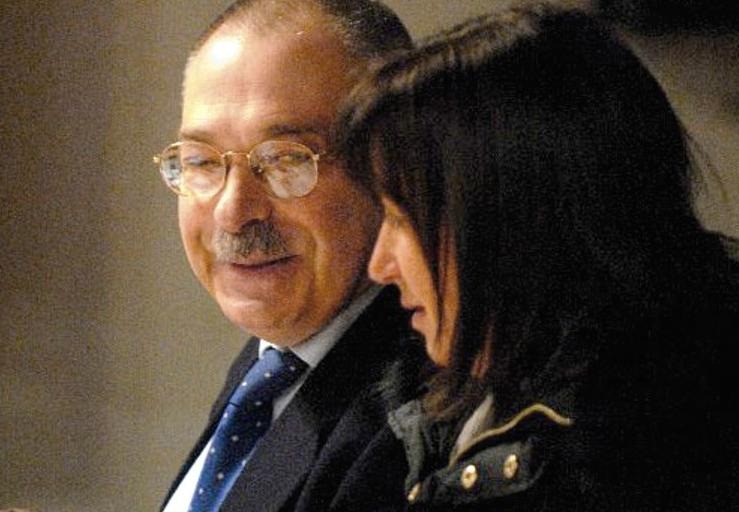Translation of the report submitted by Profs. Carla Vecchiotti and Stefano Conti of the University of Rome — La Sapienza to the Corte di Assise di Appello (Court of Appeals) of Perugia, Italy, regarding DNA evidence in the case against Amanda Knox and Raffaele Sollecito is now complete. Vecchiotti and Conti were appointed by the presiding judge in Amanda and Raffaele’s appeal trial, Claudio Pratillo Hellmann, to conduct an independent review of this evidence, which (like most of the evidence in the case) had long been seriously questioned by Amanda and Raffaele’s defense teams and by outside observers.
The conclusions reached by Conti and Vecchiotti constitute a damning indictment of the investigation conducted by Italy’s Scientific Police, and in particular of the methods employed by the prosecution’s main forensic scientist, Patrizia Stefanoni. They lend official support to the already-widespread perception that Amanda and Raffaele have been the victims of a scandalous miscarriage of justice.
Read the translation here: The Conti-Vecchiotti Report By komponisto
View the full report in Italian here: http://www.injusticeinperugia.org/Expert_Report.pdf
Here is an English translation of the conclusions reached by the independent court appointed experts Stefano Conti and Carla Vecchiotti.
CONCLUSIONS
Based on the considerations explained above, we are able to respond as follows to the inquiries posed at the assignment hearing:
"Having examined the record and conducted such technical investigations as shall be necessary, the Expert Panel shall ascertain:
1. whether it is possible, by means of a new technical analysis, to identify the DNA present on items 165b (bra clasp) and 36 (knife), and to determine the reliability of any such identification"
- The tests that we conducted to determine the presence of blood on item 36 (knife) and item 165B (bra clasps) yielded a negative result.
- The cytomorphological tests on the items did not reveal the presence of cellular material. Some samples of item 36 (knife), in particular sample "H", present granules with a circular/hexagonal characteristic morphology with a cental radial structure. A more detailed microscopic study, together with the consultation of data in the literature, allowed us to ascertain that the structures in question are attributable to granules of starch, thus matter of a vegetable nature.
- The quantification of the extracts obtained from the samples obtained from item 36 (knife) and item 165B (bra clasps), conducted via Real Time PCR, did not reveal the presence of DNA.
- In view of the absence of DNA in the extracts that we obtained, with the agreement of the consultants for the parties, we did not proceed to the subsequent amplification step.
2. "if it is not possible to carry out a new technical analysis, shall evaluate, on the basis of the record, the degree of reliability of the genetic analysis performed by the Scientific Police on the aforementioned items, including with respect to possible contamination."
Having examined the record and the relevant documents, we are able to report the following conclusions regarding the laboratory analyses performed on Item 36 (knife) and Item 165B (bra clasps):
ITEM 36 (KNIFE)
Relative to the genetic analysis performed on trace A (handle of the knife), we agree with the conclusion reached by the Technical Consultant regarding the attribution of the genetic profile obtained from these samples to Amanda Marie Knox.
Relative to trace B (blade of the knife) we find that the technical analyses performed are not reliable for the following reasons:
1. There does not exist evidence which scientifically confirms that trace B (blade of knife) is the product of blood.
2. The electrophoretic profiles exhibited reveal that the sample indicated by the letter B (blade of knife) was a Low Copy Number (LCN) sample, and, as such, all of the precautions indicated by the international scientific community should have been applied.
3. Taking into account that none of the recommendations of the international scientific community relative to the treatment of Low Copy Number (LCN) samples were followed, we do not accept the conclusions regarding the certain attribution of the profile found on trace B (blade of knife) to the victim Meredith Susanna Cara Kercher, since the genetic profile, as obtained, appears unreliable insofar as it is not supported by scientifically validated analysis;
4. International protocols of inspection, collection, and sampling were not followed;
5. It cannot be ruled out that the result obtained from sample B (blade of knife) derives from contamination in some phase of the collection and/or handling and/or analyses performed.
ITEM 165B (BRA CLASPS)
Relative to Item 165B (bra clasps), we find that the technical analysis is not reliable for the following reasons:
1. There does not exist evidence which scientifically confirms the presence of supposed flaking cells on the item;
2. There was an erroneous interpretation of the electrophoretic profile of the autosomic STRs;
3. There was an erroneous interpretation of the electrophoretic profile relative to the Y chromosome;
4. The international protocols for inspection, collection, and sampling of the item were not followed;
5. It cannot be ruled out that the results obtained derive from environmental contamination and/or contamination in some phase of the collection and/or handling of the item.
THE EXPERTS
Prof. Carla Vecchiotti
Prof. Stefano Conti

Stefano Conti & Carla Vecchiotti

Injustice in Perugia
a website detailing the wrongful conviction of Amanda Knox & Raffaele Sollecito

The Conti-Vecchiotti Report
Additional Resources
Professional Analysis
Injustice in Perugia
The Appeal
The Victim
Meredith's Killer
Wrongfully Convicted
About Us/Contact Us